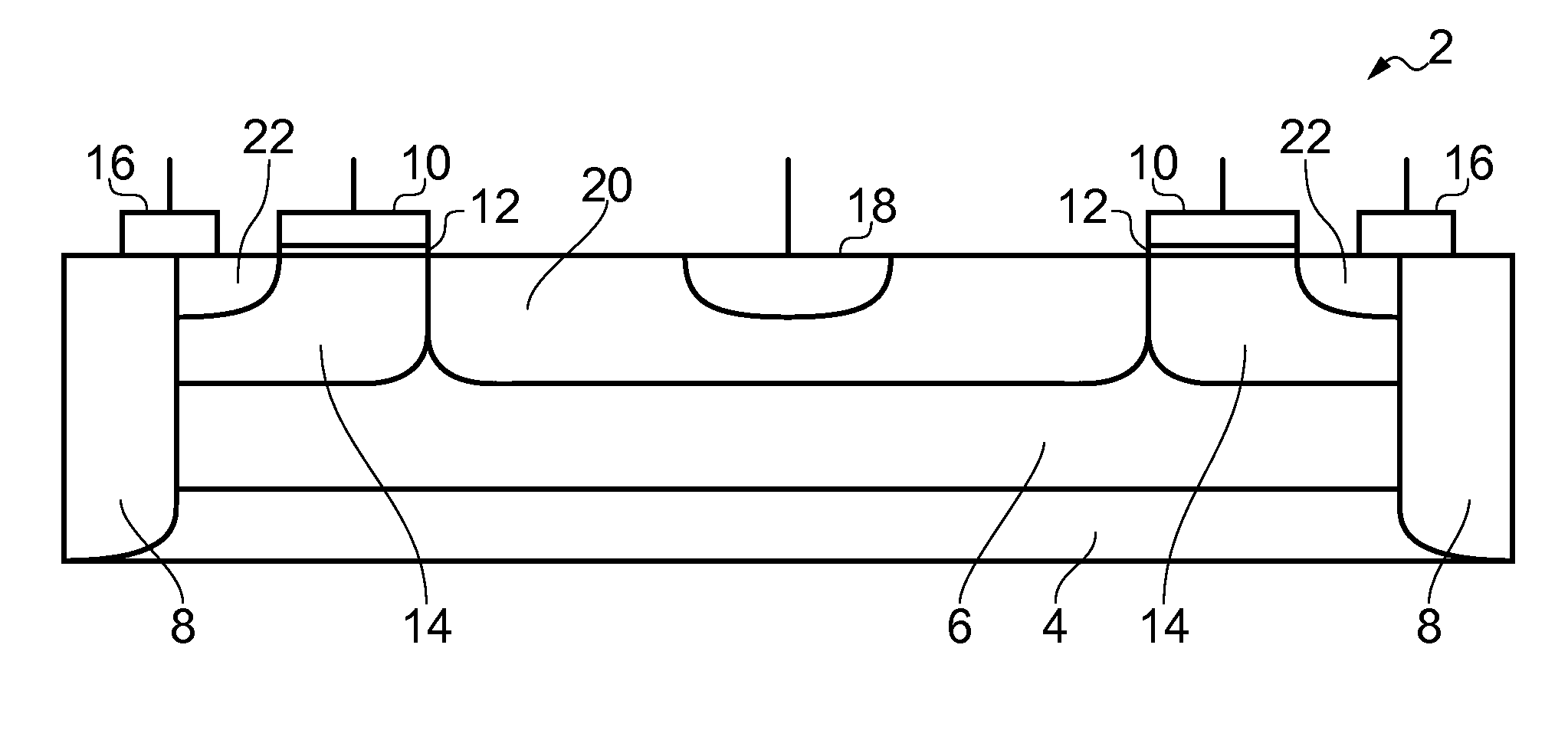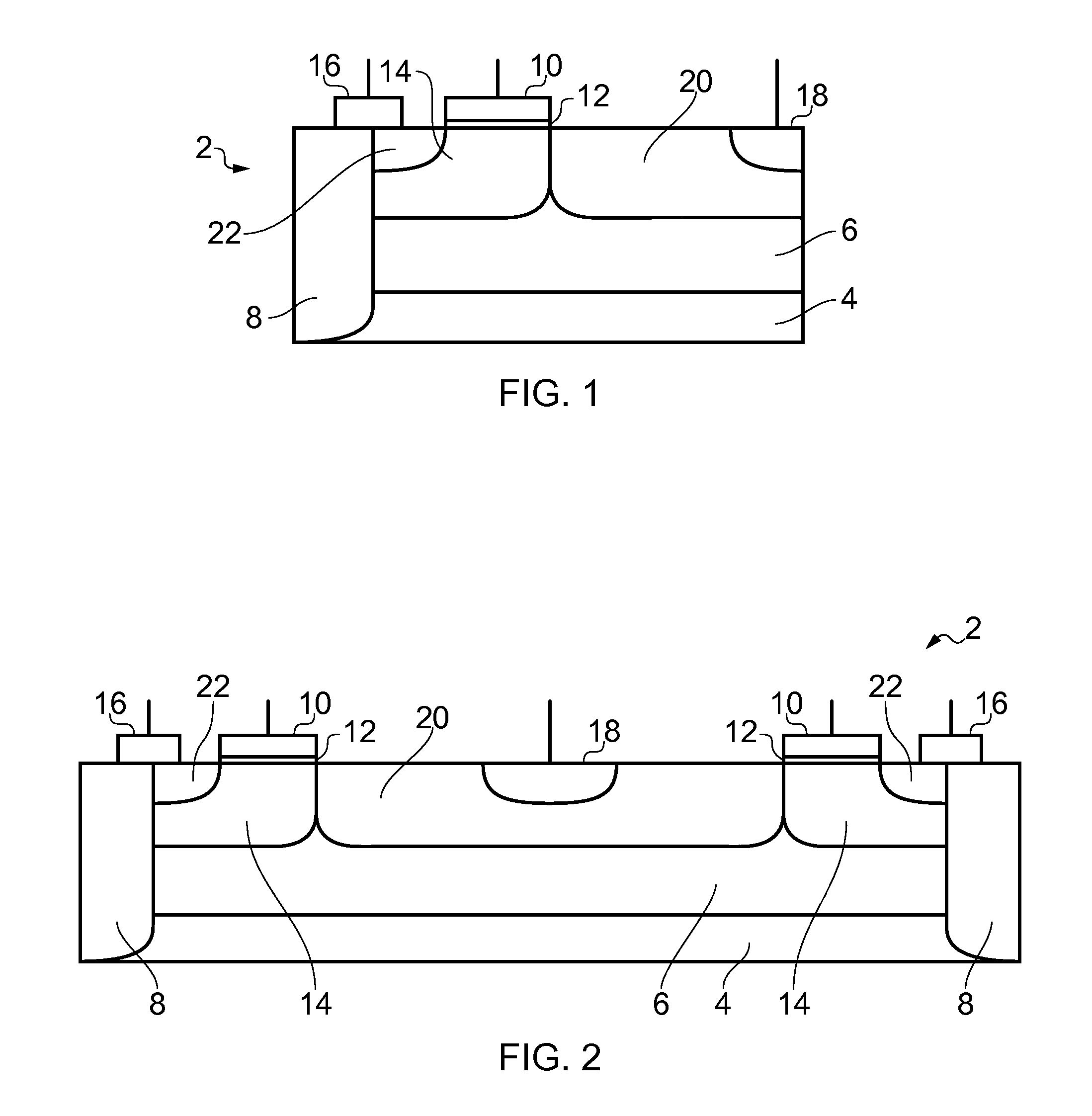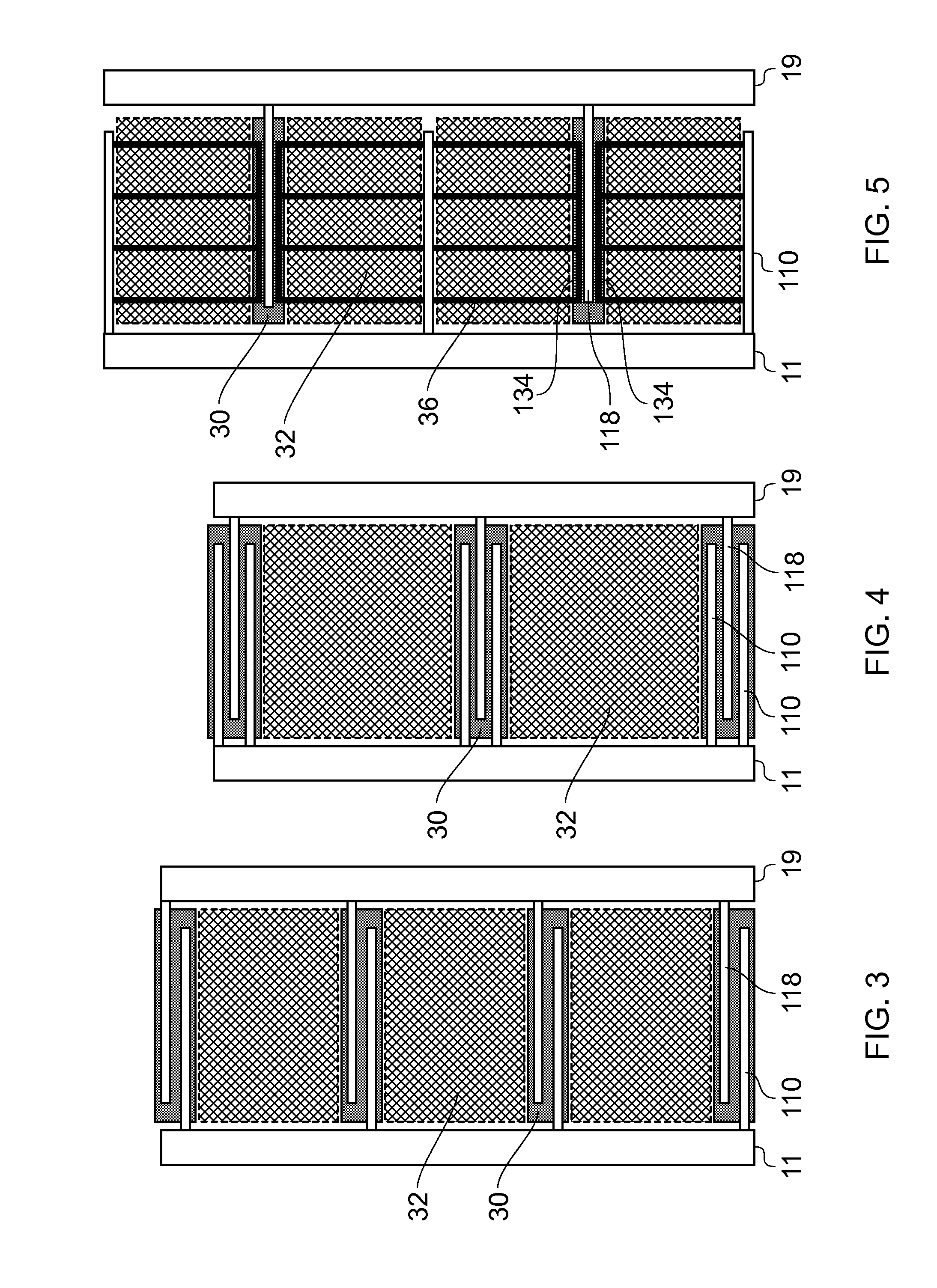Rf-power device
a power device and radio frequency technology, applied in semiconductor devices, semiconductor/solid-state device details, electrical apparatus, etc., can solve problems such as self-heating and mutual heating, heat generation, performance degradation or even transistor damage, and achieve significant space saving and reduce mutual heating of rf-power transistors.
- Summary
- Abstract
- Description
- Claims
- Application Information
AI Technical Summary
Benefits of technology
Problems solved by technology
Method used
Image
Examples
Embodiment Construction
[0024]Embodiments of the present invention are described in the following with reference to the accompanying drawings.
[0025]FIG. 1 shows a first example of an RF-power transistor 2. The RF-power transistor 2 is provided in a semiconductor substrate 4, and includes a source region 22 and a drain region 18. The source region 22 and the drain region 18 are provided in respective wells 14 and 20, which are formed in an epitaxial layer 6 on the substrate 4. The well 20 forms a drain drift region of the device. The well 14 forms a channel region of the device. As shown in FIG. 1, a contact 16 can be provided to connect to the source region 22 and the channel region of the well 14 to the substrate region 4 via a doped well region 8. Above the channel region in the well 14, there is provided a gate. The gate includes a dielectric 12 isolating a gate electrode 10 from the channel region.
[0026]This form of RF-power transistor is known in the art. Another version of this form of power transist...
PUM
 Login to View More
Login to View More Abstract
Description
Claims
Application Information
 Login to View More
Login to View More - R&D
- Intellectual Property
- Life Sciences
- Materials
- Tech Scout
- Unparalleled Data Quality
- Higher Quality Content
- 60% Fewer Hallucinations
Browse by: Latest US Patents, China's latest patents, Technical Efficacy Thesaurus, Application Domain, Technology Topic, Popular Technical Reports.
© 2025 PatSnap. All rights reserved.Legal|Privacy policy|Modern Slavery Act Transparency Statement|Sitemap|About US| Contact US: help@patsnap.com



